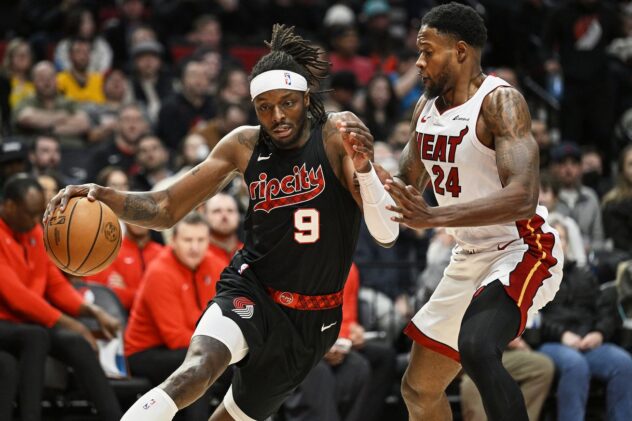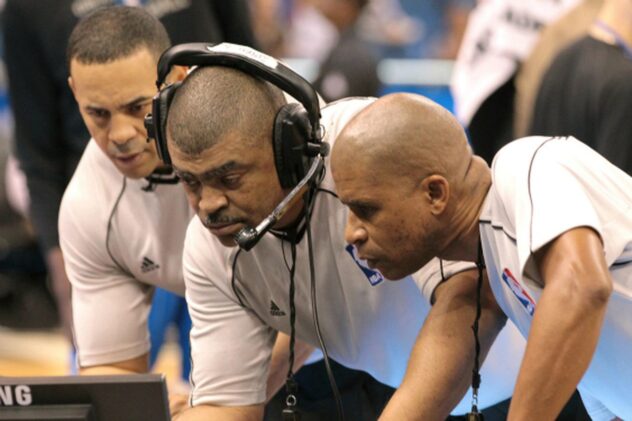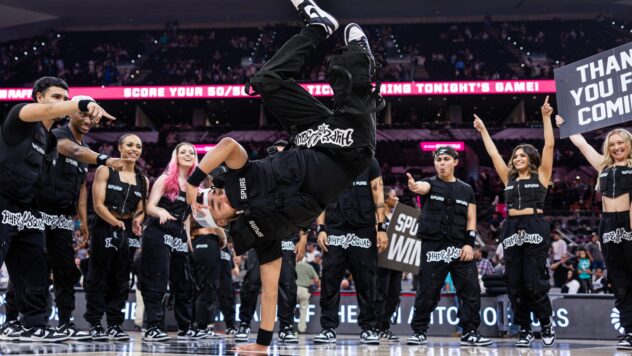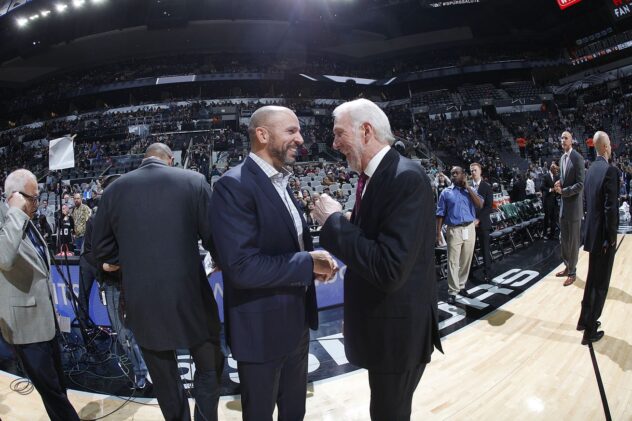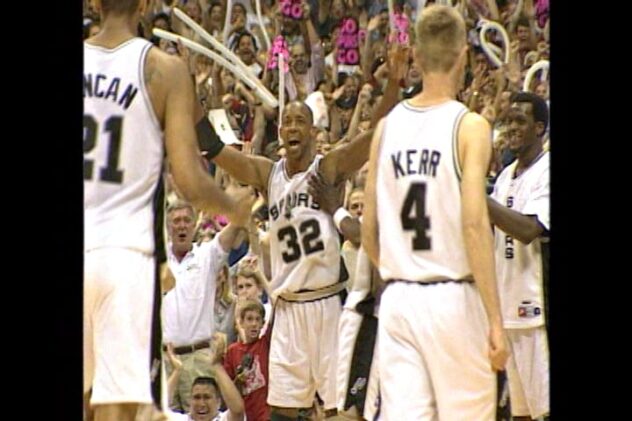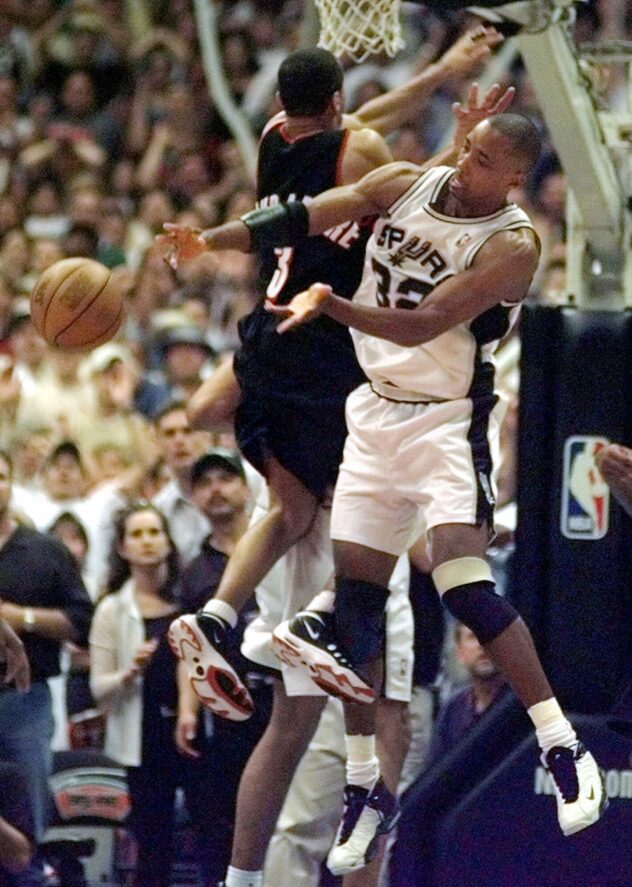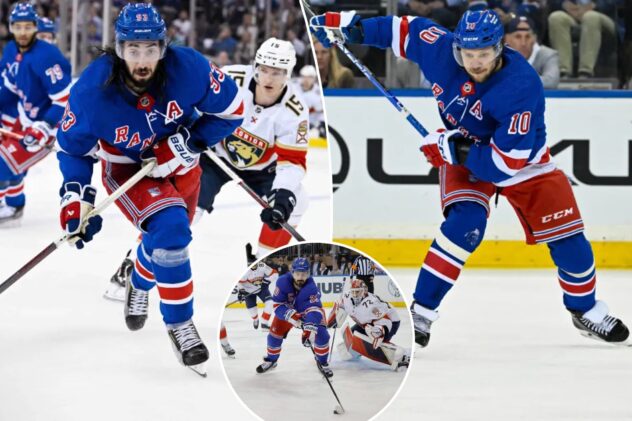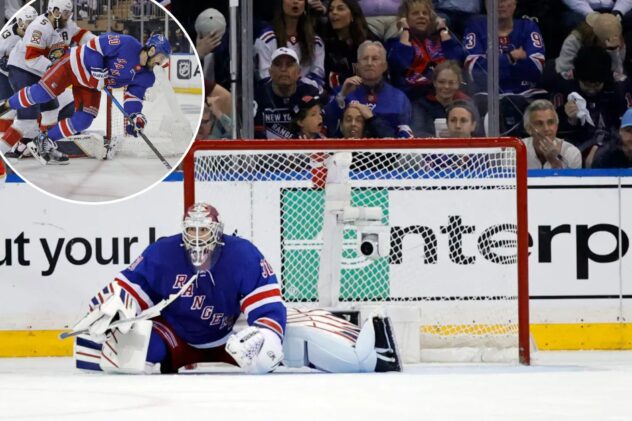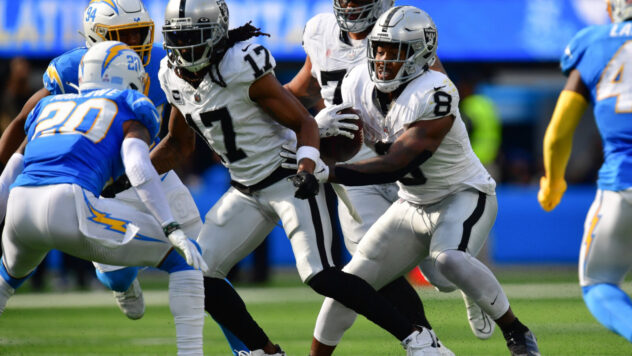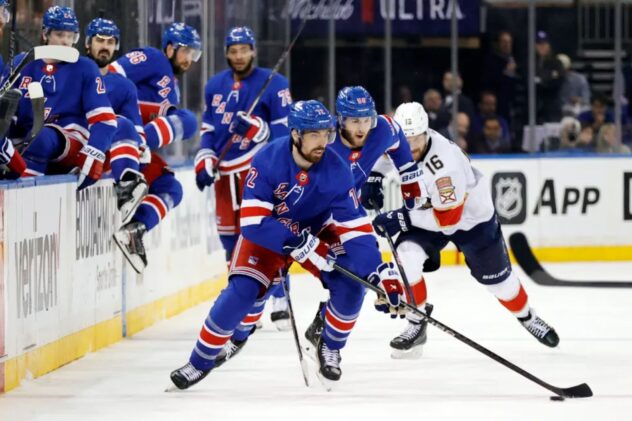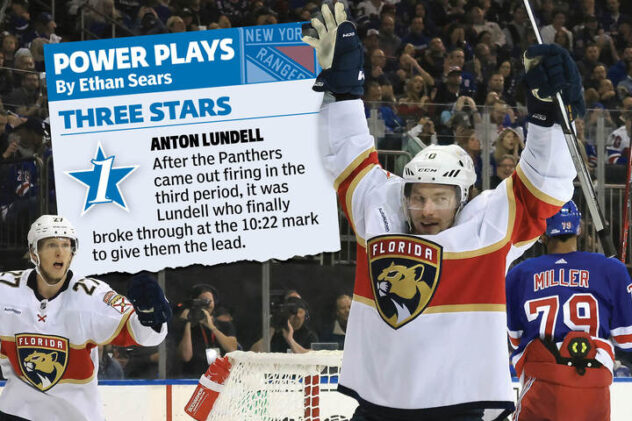Taking a look at where the Spurs rank in hustle stats
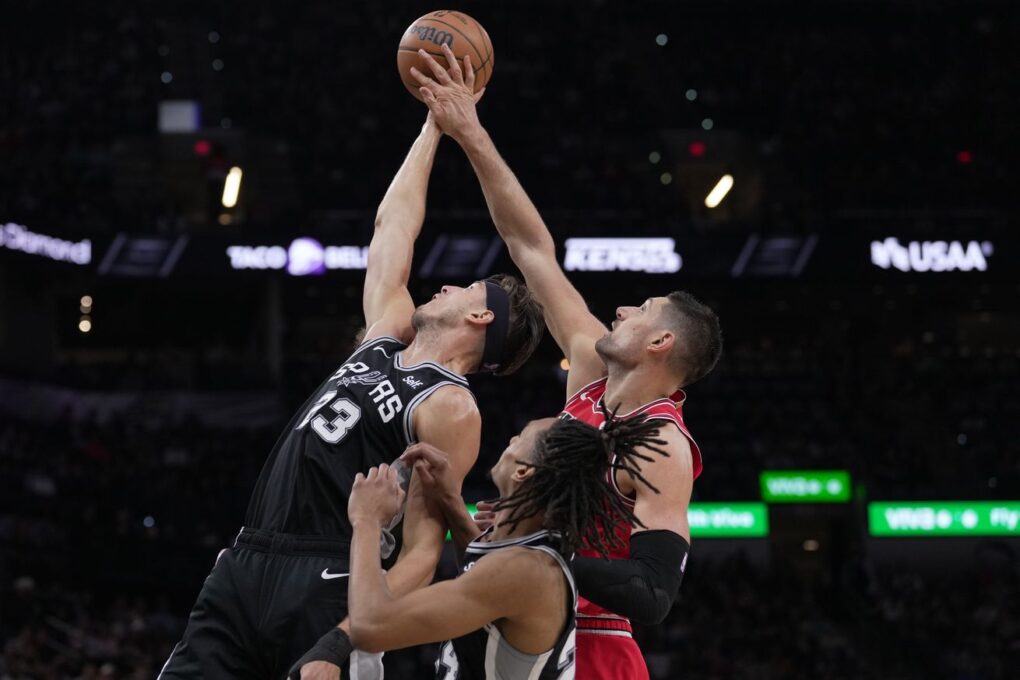
The Spurs are better in many of these categories that you may think, but a lot of that goes away during their meltdowns.
This week, I wanted to dive into more of a miscellaneous category of analytics which are the hustle stats. The young Spurs roster might not have the game IQ and experience to search for the best possible shot on offense or rotate correctly on defense, but their energy and physicality should be able to carry them on these fronts.
The first graph displays the offensive rebound rate (how many missed shots by San Antonio are being rebounded by them as well) and the number of second-chance points scored in each game. Teams that are above the general trend line are more efficient in making use of their second-chance possessions while teams below are not.
/cdn.vox-cdn.com/uploads/chorus_asset/file/25147918/or.png)
At this point, I am happy just to see the Spurs aren’t a bottom-five team. However, that is not the standard we should be looking to compare to, especially with the height advantage we have at multiple positions given their various lineups. Victor Wembanyama leads in aiding this effort with 10.2 rebounds a game (12th in the league), 2.4 of them being on the offensive end (30th in the league). Although Zach Collins averages 6.5 rebounds a game (54th), he crashes the offensive glass pretty well with an average of 2.1 rebounds (T-35th).
Having multiple guys who can contribute on the offensive glass is crucial in creating second-chance points. If we look at players individually, even if they are putting up amazing numbers, it is not enough to carry the team. For instance, Anthony Davis ranks 5th in offensive rebounds but no other Laker is in the top 100. Washington’s Daniel Gifford is 23rd but their next best is Deni Avidja at 89th. Meanwhile, Utah’s John Collins and Kelly Olynyk rank 20th and 47th. Furthermore, the Knicks have a strong frontcourt combo in Mitchell Robinson (1st), Isaiah Hartenstein (25th), and Julius Randle (T-35th). Luckily Wemby and Collins can be on pace to be closer to the likes of the highest-ranking teams. But while Jeremy Sochan and Keldon Johnson do a great job grabbing boards in general, they do not contribute much on the offensive end.
Next is a similar graph but for the opponent’s second-chance points. Is San Antonio allowing too many possessions per game instead of being able to get the ball back and gain more offensive opportunities? The better teams will float towards the bottom left in this scenario. Also, teams above the trendline allow second-chance points more easily than those underneath.
/cdn.vox-cdn.com/uploads/chorus_asset/file/25147920/opp_or.png)
It is a relief to know again that the Spurs are not ranked closer to the bottom, but this has still contributed to the losing streak. Many of the big runs they allow can be attributed to a lack of offensive opportunities to gain momentum. Turnovers, along with allowing second-chance points, let opposing teams pour it on, even when they aren’t being efficient. Collins currently ranks 10th in the nation in defensive box-outs per 48 minutes, Charles Bassey ranks 28th, and Julian Champagnie ranks 81st. Wembanyama, Johnson, and Sochan seem to struggle in this area, all ranking below average.
The Spurs might be allowing a high FG%, but we could also look into whether they are limiting quality possessions for their opponents to make up for that. The chart below shows how many deflections San Antonio gets on passes per 48 minutes and compares it to the percentage of loose balls recovered. Loose balls don’t always occur on potential steals but could be chaotic rebound attempts. But still another chance for the Spurs to showcase their athleticism.
/cdn.vox-cdn.com/uploads/chorus_asset/file/25147921/deflections.png)
The Clippers were expected to be seen as having many deflections with a talented roster that has been a solid run as of late. Seeing the Hawks tie them for most deflections was surprising. The Clippers do seem to be the best in converting these chaotic events into offensive possessions which can be crucial down the stretch. Even if they begin to get cold, simply having the ball more allows teams to get back into games.
Contrary to what I thought would be the case, the Spurs are not impressive in either deflections or recovery percentage. This paints a picture of them almost sitting back on defense, not eager to block the passing lanes, allowing opponents to run their plays as they wish. This has been a major ingredient in fans’ frustration as Pop doesn’t seem to have found a way to cause any disruption.
Last week we examined how the Spurs were giving up points, primarily focusing on twos and threes and the distance of the closest defender. The paint statistics showed that despite the presence of shot blockers, there are still many occurrences in which the Spurs are giving up points in the paint which led me to believe these were wide-open looks coming off fast breaks. I can also vividly remember the fast breaks the Spurs generate and the roof-raising dunks, so I wanted to investigate how they are performing in transition as well. The final graph plots fast break points scored versus allowed.
/cdn.vox-cdn.com/uploads/chorus_asset/file/25147922/fastbreaks.png)
Obviously, any team would want to score more than allowed, but the Spurs have a net amount of minus 1.4 points per 48 minutes, ranking 23rd. They don’t really stand out on either end, and this becomes more evident when guards aren’t leading the break. Just based on the eye test, Vassell and Jones seem to know what the correct pass is in transition, while others might struggle and simply reset (except for Wemby who just attacks the rim).
Golden State, Miami, and Milwaukee, teams renowned for being leaders in the Four Factors in their championship years, are severely underperforming this year. You could attribute it to age or lack of defensive depth, but all three teams struggle against what seems to be faster teams in transition. The Spurs should theoretically be nowhere near them given their size and speed. You can see this when we look at explosive teams such as Houston, Brooklyn, and Oklahoma City.
There are fascinating observations on the teams who rank at the extremes in net rating. For instance, the Thunder have one of the worst opponent offensive rebound percentages and allow the most amount of second-chance points. But they can make up for this by being highly effective in the fast break. They score 15.2 points per 48 minutes while allowing just 9.9. Another example is Houston ranks last in deflections which accordingly only grants them a below-average amount of fast break points scored. But their fast break defense is phenomenal, allowing just 7.4 points off them.

